Browse Exhibits (21 total)
Christianity Conquers
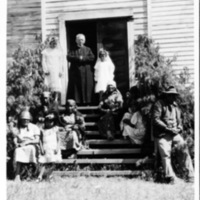
Christianity swept through the western part of America throughout the 19th and 20th century. It conquered native religions and diminished their cultures. Through the works of Father Paul Prando and Father Edward Griva, we are able to track the changes in interaction and culture over 40 years.
Father Grivas travels can be tracked on this interactive map: https://goo.gl/maps/Hkw3RWG9hqS2
Catholicism as a Meeting Space Between Two Cultures
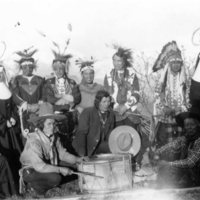
The photographs in this exhibit and much of the background research that accompanies them come the archives of the the Oregon Province of Jesuits. This exhibit also drew largely from the writings of Father Edward Griva, including written sources from both his diary as well as his brief account of the missions at Nespelem. Father Edward Griva was a unique person at the time, speculated to be the only white person to be able to speak and write the Yakima language. While he was very socially progressive with respect to the Native culture, Father Griva still wrote from a white, Jesuit perspective.
These photos were taken from the St. Ignatius Mission Collection, Jesuit Oregon Province Archives and they provide insight into the changing relationship between the Native people and white people.
Father Griva tended to stick to the areas surrounding Nespelem. More broadly, he largely stuck to the Colville Reservation and the area immediately surrounding. The documents that are being analyzed are largely from 1910-1930, so this is a period of time where tensions between Native people and white people have settled and the communities have started to come together, largely through Catholicism.
Credits:
Patrick Leon, Rito Karashima
Evolution of social relationships between natives and whites
Encountering Faith on the Plateau
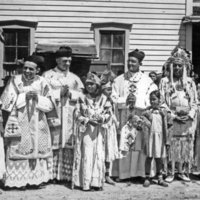
Jesuit missions heading west established missions in the heart of Plateau Indian country. Occupying lard swaths of Eastern Washington, Idaho, Oregon and Canada. For the next 80 years Jesuit attempts at converting and indoctrinating native peoples would be strained by conflicts between native Americans and western settlers, and disease. However, a transition period began, where Jesuits, western settlers, and Native Americans began using spirituality and religion as a place of common ground.
Griva's Private Relations - Group 20

The photographs and text in this digital exhibit come from Gonzaga University's Foley Library in relation with Jesuits West Province of the Society of Jesus. All documents and pictures originated from the Edward Griva, S.J. Collection. These items all hail from Northeastern Washington.
Father Edward Griva worked as a missionary in the Inland Northwest, teaching, converting and guiding Native Americans within the Plateau region. Born in Italy, in 1864, he eventually travelled to Washington for his Jesuit education and training. Until he died in 1948, Fr. Griva acted as a religious leader for the Kalispel reservation and the Confederate Tribe of the Colville reservation. One example of Griva’s extensive work in the area reveals itself in his diary where he reports having heard 2886 confessions in 1921.
This exhibit showcases Griva’s interactions with the tribes mentioned above. It will show questions used in the Sacrament of Confession, pictures of Fr. Griva interacting with Native Americans, and various pictures of successfully converted Native Americans, both young and old.
Translation: Language and Religion

Jesuit missionaries operated throughout the Pacific Northwest, and the photographs in this exhibit were taken as part of the missionaries' work in a relatively defined geographic area - Spokane, Oroville, Inchelium, the rural Pia church, and areas and homes in between. While some missionaries during this time period may have traveled longer distances, these are really our "local" missionaries for the area.
Many, if not most, of the locations described in the textual works written by Father Griva, Father Prando, and other missionaries that accompany these photographs are still standing. Inchelium, featured in some photographs in the exhibit, was relocated almost 15 years after the photographs were taken from its original location to another spot on the Colville Indian Reservation, and remains a small community with less than 500 members. Oroville grew to a small city of 1,600 people, and the rural Pia church remains on the reservation, rennovated and restored to its former glory.
These photographs mark the meeting of two huge cultures and civilizations: the Kalispel people and those from the Colville Indian Reservation (and, more generally, Native peoples across the Pacific Northwest) and Jesuit missionaries, both sides with defined values and visions for the future. The photos and text we have chosen demonstrate the ongoing cultural act of translation and interpretation on two levels: religion and language. How did the two peoples learn to understand each other? How did they, not only linguistically, but viscerally and literally, transmit information about a god in the sky, the holy trinity, and the sacraments? How were these concepts understood and perceived by the Native peoples? Hopefully this exhibit provides some insight into these questions.
The photographs contained in this exhibit were taken by or at the very least, at the direction of Jesuit missionaries and their staff. These photographs have remained in the possession and control of Jesuit institutions, including Gonzaga University, in the years since they were created. These photographs have never been made public, nor have they been made accessible to the Native American tribes who are the subject of many of these photographs.
Spreading Religion in the Vast Inland Empire
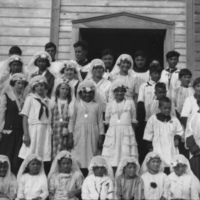
During the early 1900s, Jesuit missionaries began to move to the Inland Empire in order to convert Plateau Indians to Catholicism. One issue the Jesuits did not take into account is how spread the natives were across the plateaus. Having to travel miles upon miles to reach each church with a limited amount of missionaries made evangelizing the natives much more difficult than the Jesuits had originally thought.
As you read this exhibit, you will learn about some of the struggles the Jesuits faced in their efforts to convert the Native Americans
Jesuit Sacraments of the Columbia Plateau
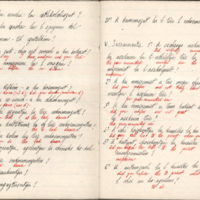
This exhibit details archival records regarding three Jesuit Sacraments on the Columbia Plateau: Confession, Communion and Confirmation. There were a variety of differences in culture between the Jesuit missionaries and the Native Americans of the Plateau. However, the ceremonial nature of the sacraments struck a chord with a variety of Native Americans and they often led to an increased interest and connection with Catholicism.
Feast of Corpus Christi
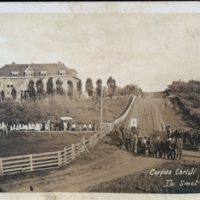
In this exibit are photographs documenting different aspects of the Feast of Corpus Christi, celebrated every year throughout the Catholic Church. These photographs come from the Archives of the Jesuits West Province and depict Corpus Christi Feasts at various Jesuit missions on the Colombian Plateau in the early 20th century. Once thought of by the Jesuits as a pristine Native paradise, the Plateau was one of the last regions in the United States to come into direct contact with White culture.
The photographs in this exhibit are a conglomoration of various Corpus Christi Feasts at Jesuit missions across the Plateau in the mid-1920s.
Much of the textual information provided in this exhibit comes from the first hand accounts of Edward Griva, a Jesuit missionary to the Plateau in the early 20th century. While on the Plateau, Griva diligently documented his expeirences in a journal, providing a window into the religious interactions between Natives and Whites. In a seperate account, Griva gives a detailed record of his involvement in, and observations of, multiple Corpus Christi Feasts in May and June of 1926.
In conjunction, the photographs and primary source documents demonstrate the ways in which Natives interacted with, and participated in, an important yearly Jesuit ritual, as seen through a White lens.
The Feast of Corpus Christi was a highly ceremonial affair, including a great procession with multiple benedictions along the way. This exhibit showcases the various stages of the celebration: leaving the church, processing, stopping for benedicitons, and returning to the church. The photographs are ogranized into subpages based on the stages of the celebration they depict.
Corpus Christi Procession of 1927 at St. Michael's Mission at Inchelium
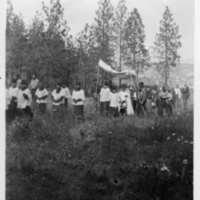
In 1927 Father Griva organized and led Corpus Christi processions across eastern and central Washington as part of the Jesuit mission of conversion of the local tribes. This exhibit gives a brief description of who Father Griva was, the Jesuit missions in the area, their effect on local native populatinos, what the Corpus Christi procession was and its significance, and what it looks like today. Photographs of various Corpus Christi Processions are included throughout from various years to give a visual representation of the Catholic tradition and the different people it included.
Religious Interactions at Nespelem
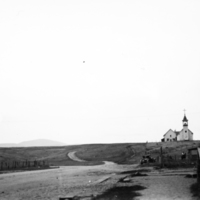
This exhibit focuses on the religious interactions between the Jesuit missionaries and native people living in Nespelem. Nespelem is located on the Colville Indian Reservation in Northeastern Washington state. This part of the reservation was home to about 500 natives who had all for the most part been baptized by previous Catholic missionaires. When Jesuit missionary Father Edward Griva arrived at Nespelem in 1915, most of the native people were indifferent towards the Catholic religion and Fr. Griva felt destined by God to fix their "pagan" ways.
